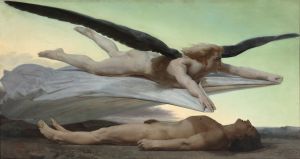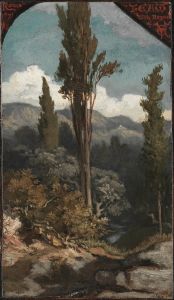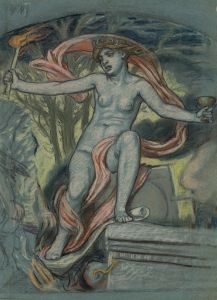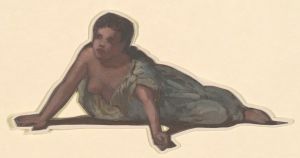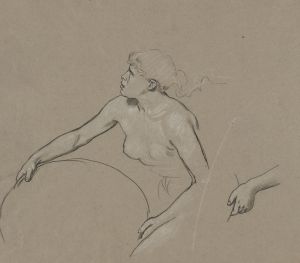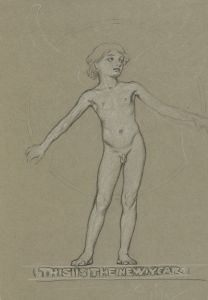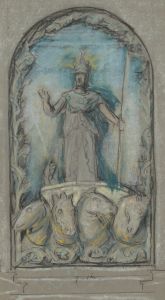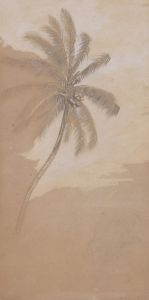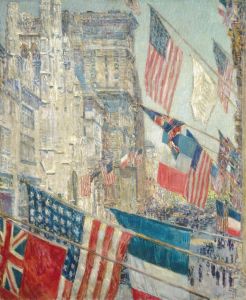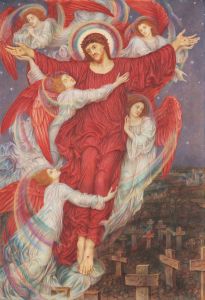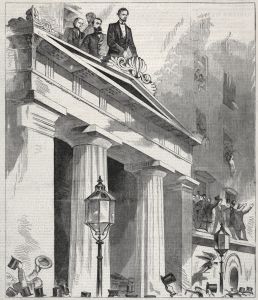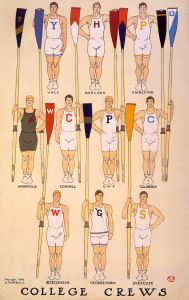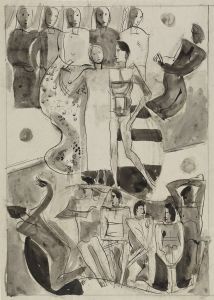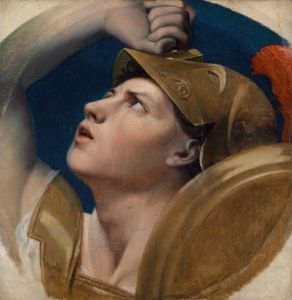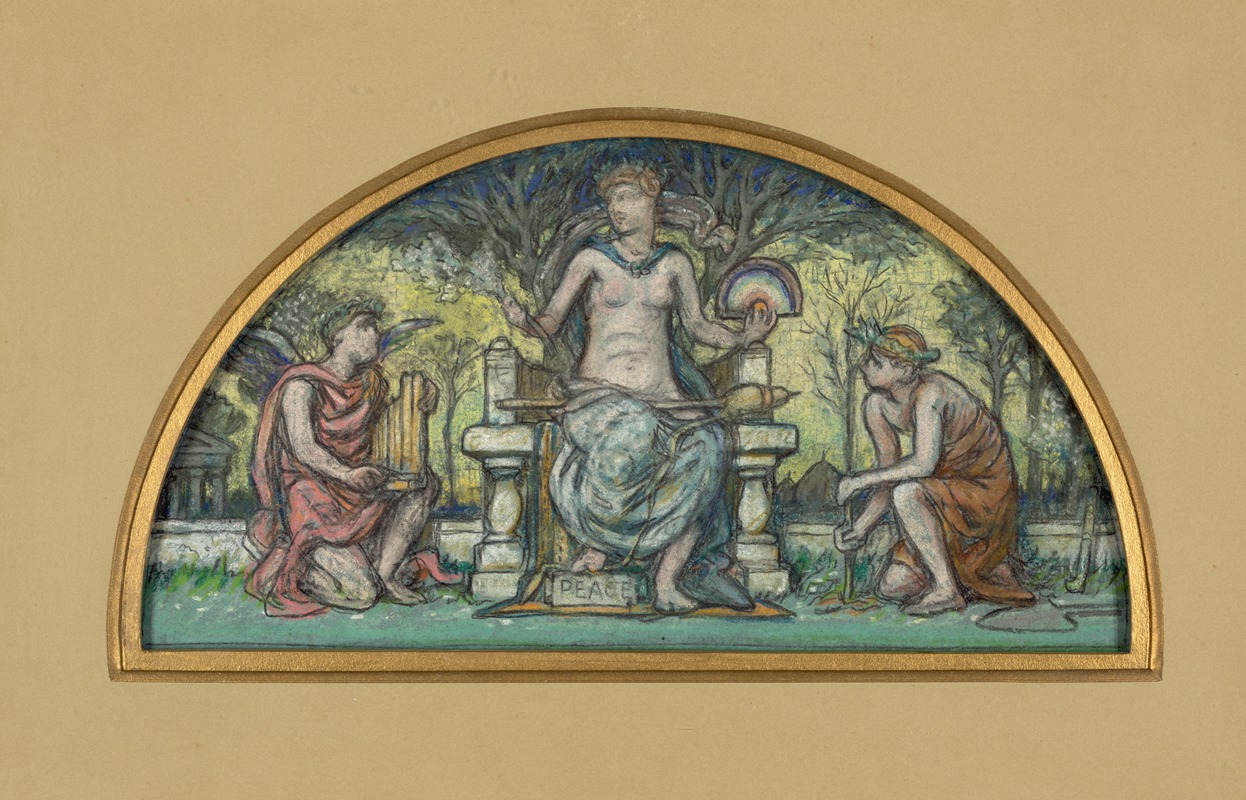
Study for Peace and prosperity
A hand-painted replica of Elihu Vedder’s masterpiece Study for Peace and prosperity, meticulously crafted by professional artists to capture the true essence of the original. Each piece is created with museum-quality canvas and rare mineral pigments, carefully painted by experienced artists with delicate brushstrokes and rich, layered colors to perfectly recreate the texture of the original artwork. Unlike machine-printed reproductions, this hand-painted version brings the painting to life, infused with the artist’s emotions and skill in every stroke. Whether for personal collection or home decoration, it instantly elevates the artistic atmosphere of any space.
Elihu Vedder was an American symbolist painter, known for his allegorical works and contributions to the American Renaissance movement. One of his notable works is "Study for Peace and Prosperity," which reflects his interest in symbolism and allegory. Vedder's art often explored themes of human experience, morality, and the metaphysical, and "Study for Peace and Prosperity" is no exception.
"Study for Peace and Prosperity" is a preparatory work, which means it was likely created as a preliminary version or concept for a larger, more finished piece. This practice was common among artists who wanted to experiment with composition, form, and thematic elements before committing to a final version. In this study, Vedder would have explored the visual and symbolic elements that he intended to incorporate into the final artwork.
Vedder's style is characterized by his use of rich symbolism and a meticulous attention to detail, often drawing from classical mythology and literature. His works frequently feature ethereal figures and dreamlike landscapes, which are intended to evoke a sense of mystery and introspection. In "Study for Peace and Prosperity," Vedder likely employed these techniques to convey his vision of peace and prosperity, though the specific imagery and symbolism used in this study are not widely documented.
The themes of peace and prosperity were significant during Vedder's time, as the late 19th and early 20th centuries were periods of great social and political change. Artists like Vedder used their work to comment on the human condition and the potential for harmony and abundance in society. While the exact details of "Study for Peace and Prosperity" are not extensively recorded, it can be inferred that Vedder's work was influenced by the broader cultural and philosophical movements of his era.
Elihu Vedder's contributions to art extend beyond his paintings; he was also known for his illustrations, particularly for the 1884 edition of Edward FitzGerald's translation of "The Rubaiyat of Omar Khayyam." His ability to blend visual art with literary themes made him a prominent figure in the American art scene.
"Study for Peace and Prosperity" exemplifies Vedder's approach to art as a medium for exploring complex ideas and emotions. Although specific details about this particular study are limited, it remains a testament to Vedder's skill as an artist and his dedication to exploring profound themes through his work.





